- Home
- Alistair Moffat
The Secret History of Here
The Secret History of Here Read online
Also by Alistair Moffat
The Sea Kingdoms: The History of Celtic Britain and Ireland
The Borders: A History of the Borders from Earliest Times
Before Scotland: The Story of Scotland Before History
Tyneside: A History of Newcastle and Gateshead from Earliest Times
The Reivers: The Story of the Border Reivers
The Wall: Rome’s Greatest Frontier
Tuscany: A History
The Highland Clans
The Faded Map: The Lost Kingdoms of Scotland
The Scots: A Genetic Journey
Britain’s Last Frontier: A Journey Along the Highland Line
The British: A Genetic Journey
Hawick: A History from Earliest Times
Bannockburn: The Battle for a Nation
Scotland: A History from Earliest Times
The Hidden Ways: Scotland’s Forgotten Roads
To the Island of Tides: A Journey to Lindisfarne
First published in Great Britain, the USA and Canada in 2021
by Canongate Books Ltd, 14 High Street, Edinburgh EH1 1TE
Distributed in the USA by Publishers Group West and in
Canada by Publishers Group Canada
canongate.co.uk
This digital edition first published in 2021 by Canongate Books
Copyright © Alistair Moffat, 2021
Illustrations and map © Andrew Crummy, 2021
The right of Alistair Moffat to be identified as the author of this work has been asserted by him in accordance with the Copyright, Designs and Patents Act 1988
British Library Cataloguing-in-Publication Data
A catalogue record for this book is available on
request from the British Library
ISBN 978 1 83885 113 2
eISBN 978 1 83885 115 6
For Walter Elliot and Rory Low
Contents
Foreword
Introduction
January
February
March
April
May
June
July
August
September
October
November
December
Acknowledgements
Foreword
Once Upon a Time
The Long Track lies fast asleep. The dawn track, it waits under the blanket of the night for the grey of the eastern sky to glow pink. Nothing stirs. Birds roost in the trees and the animals of the woods hide snug in their burrows, invisible to the blinking stare of the owls, perched still on the upper branches, watching, waiting for movement. The sleeping voles, rabbits and mice curl up in their own body warmth, safe from the snuffling of night predators nosing through the leaves of long-dead summers.
High above the Long Track the silence shudders with the wing-beats of two swans, their heads and necks spear-straight as they wheel south towards the waters of the great river. Under the shadows of the trees the night slumbers on.
Over the heads of the woods to the east the black horizon of the hills waits for the light to rise. In the half-world before dawn, the ghost hours, a sudden mist falls, shrouding the track and the trees. Far in the distance, roosting crows lift into the air, their cawing, cackling racket echoing around the valley. Then there is a snort, a whinny and out of the mist rides an armoured knight. Neck-reining his mighty destrier, he slows the stallion to a walk and soothing words murmur across the fields. Ramrod-straight in the saddle, his helm slung over the pommel, his armour a dull lustre in the morning light, the knight stares fixedly ahead. When a breeze suddenly riffles through the trees, the long caparison on his destrier billows, a blood-red crusader cross on white silk.
Behind rides an esquire on a little palfrey, his pennant planted in a stirrup niche, his liveried tabard bright with the device of his lord. Swivelling in the saddle, he turns to look for those who follow, listening for the creaks of the carts and the rumble of their wheels on the stones of the Long Track. The plod of the destrier and the palfrey linger as the knight and his esquire disappear into the morning mist.
On the edges of the wood, the children of the mist are playing. Visible only when they move, deer graze in the clearings. While the little fawns race each other, coming to sudden stops, making impossible turns, the does look up, ears pricked, searching for threat. In deep cover, it is waiting. Downwind, by the trickle of the burn at the foot of the track, two hunters hide in the tangle of undergrowth, silently grimacing at the prick of briars and thorns, camouflaged in their buckskin tunics. Moving very slowly, they inch their way closer to the grazing deer. They know they will have only one shot before their prey scatter, skittering back into the wood in a moment. The wind suddenly shifts, the does look up, their ears flicking, searching for the small sounds of danger, ready to run. The hunters nock their flint-tipped arrows, stand up, let fly, and a fawn staggers and stumbles. Pierced in the flank, the young animal bays in shock and pain, gets up and runs unsteadily. Even though the fawn gains the cover of the trees, the hunters will follow the blood trail and make their kill when the wounded animal is too weak to run beyond the range of their arrows.
Over the eastern ridges the sun climbs and the mist fades in moments. A tide of butter-coloured light washes down the valley, and on the Long Track the jingle of harness is heard. Wrapped in their cloaks against the morning chill, two riders trot up to the northern ridge. Without shields or spears, these scouts carry only the spatha, the cavalry sword. In hostile country, their eyes and ears are better weapons. Down in the valley, on the southern side of the burn, the ranks of a vast army march in battle order, their nailed boots thudding, standards glinting red and gold in the morning sun. Trumpeters send signals: halt, stand easy, form line, close ranks, march on. Brigaded together into an invasion force, the legions of Gnaeus Julius Agricola, governor of the province of Britannia, have been sent into the territory of the Selgovae, a native kindred. Leading each detachment are the eagles of the XX Valeria Victrix, the IX Hispana and the II Augusta. They begin to climb into the western hills until their surveyors call a halt and mark out the perimeter of a camp. As a screen of sentries scan the hills for movement, ditches are quickly dug and at the gates a wooden tower raised. Far to the east, soldiers can see the flash of shiny metal from the signal station above the great army depot by the River Tweed. Wrapping the landscape in a web of roads, Rome tightens its grip. Hidden in the Wildwood, native warriors watch and wait.
The shadow of war was not often cast over the Long Track. Few heard the clangour of distant battles. The march of history across the landscape usually happened elsewhere. Mostly the track was walked and ridden by peaceful travellers going about their business, or people seeking pleasure, perhaps solace. Bands of pilgrims bound for the shrines at Melrose or Jedburgh sang psalms, the burgesses of the royal burgh of Selkirk beat the bounds of their precious common land, wealthy estate owners planted an avenue of trees on either side of the track and made good the ruts and puddles so that their ladies could enjoy carriage drives, their umbrellas shading the afternoon sun. But war did change the track. In 1940, hardwood was needed and sawyers came to cut the mighty trees. Long gone by then, the Wildwood was planted with rows of sitka spruce after 1945.
After the track crosses a tarmacked C road, originally a road made by Rome, it climbs straight up to the southern ridge of the valley and plunges into the dense pinewood, disappearing into the darkness of the past.
No one travels the Long Track now, except for my family on their way home to our farm and its houses. Once a busy medieval and early modern highway, it is forgotten, a road to nowhere, or at least nowhere much. But the Long Track seems to me to be a pal
impsest, a highway for our history, a route to memory and, I believe, a different means of understanding how time passes. When I walk its curving, embedded length, curling around the flanks of knowes and ridges, sunk between high earthen kerbs by the tread of centuries of people, the creak of cartwheels and the hooves of horses, I sometimes look over my shoulder to glimpse the ghosts of the past.
The Length of Fetch
At Dalmore eternities meet. On the Atlantic shore of the Isle of Lewis, a horned bay shelters an ancient graveyard. When the dead come, they are carried, their coffins borne on the shoulders of mourning men who walk the long road down to the sea. As the bearers tire, some of them stooped with age, others take turns to complete a journey all will make one day. On wild mornings, when spindrift whips off the breakers, the gravediggers wait while the black-robed minister says the parting words. As soon as the principal mourners let the cords slip through their hands and the coffin rests at last on the sandy soil, the men take the sods of tussocky grass off the spoil heap and begin to work quickly. After the handfuls have rattled over the varnished lid, they begin to shovel in the covering soil before the ocean wind can cast it away. Once the lair is full, they place the grassy clods on top and stamp them down.
Many headstones bear the same hope: Gus am Bris an Latha, Until the Break of Day. On some, another line is added: agus an Teich na Sgailean, and the Shadows Flee Away. At Dalmore, the gravediggers make sure that there will be no resurrection until God ordains it. Blowing across the wastes of the mighty Atlantic, the west wind would not disturb the dead until the last morning, the day the trumpet sounded and the dead were seen alive. Only then would dawn break over the endless horizons of eternity. Only then would time collapse on itself.
At the tips of the horned bay, cliffs rise, and to the north-west sea-stacks stand against the surge of the ocean. On the sweep of the beach below the graveyard, above the high-tide mark, beautiful, rounded grey boulders are piled up in a dense curve. Many are veined with pink and blue, all have been tumbled, rounded and wave-worn by the power of the ocean over countless millennia, as it rumbled them relentlessly towards the beach. Some seem to be Lewisian gneiss. Amongst the oldest rocks on the Earth, these strata were pushed upwards to spew through the young planet’s crust as it burned and convulsed many millions of years ago. Now they lie still, quiet and dignified, their immense journey ended on Dalmore beach, settled below the rows of headstones.
When the breakers roll in off the Atlantic, they rise and fall on the beach with a whump, like the beat of the world’s drum. It is loudest when the seas are mountainous, when the waves rise high, cresting white foam and crashing. Mariners and meteorologists know where these leviathans begin their lives. What they call the length of fetch is the distance a wave travels before it beats against the shore and retreats invisible in the undertow. When a westerly wind blows directly across the Atlantic from the coasts of Canada, it creates waves three thousand miles from where they make landfall, an immense length of fetch.
At Dalmore time turns to a different rhythm. It is not linear. Now, we are all children of clocks and calendars, caught up in the dance of time, the cares of tomorrow, the month’s end, the next minute. The boulders of the beach of the horned bay, the whump of the breakers and the hope carved on the headstones speak not of the transit of days but of the endless renewals of millennia. By the cemetery at Dalmore, where the dead sleep in the sands of time, I began long ago, almost without knowing it, to think of my life in another way. Instead of looking at my wrist to discover the time of day, and become anxious about what was next, it occurred to me that I should look up at the sky, sense the shift of the weather, the seasons, and glory in the day, even in the moment. In a Gaelic phrase, I learned to listen to the music of the thing as it happened. It has taken many years for me to begin to shed the compelling notion that by organising time we somehow control it. We do not.
On a warmer, kinder shore stand the ruins of Hippo, a Roman town on the Mediterranean coast in the province of Numidia, modern Algeria. There a theologian struggled with notions of time. In his fourth-century Confessions, St Augustine wrote, ‘Quid est enim tempus?’ For what is time? After years of thought and prayer, much of it concerned with the Second Coming, the End of Days and the Last Judgement, he came across a simple metaphor. In an image that prefigured modern measurement, Augustine understood time as a potter’s wheel. It is an attractive notion, offering a sense of process rather than a linear progression. The wheel would stop turning when the pot was formed. And would only turn once more when another lump of clay was puddled, rolled in the potter’s hands and placed on the wheel.
Introduction
Maidie and Me
In November 2016, Maidie came to the Henhouse, our little farm. A tiny West Highland terrier puppy, she whimpered and whined for her mother and the warmth of her little brothers and sisters. She was born and bred at Skelf hill, a remote sheep farm in the hills south-east of Hawick. Skelf is a Scots word for a shelf, and it perches on the steep flanks of Skelf hill Pen. The last element is an Old Welsh place name, a survival from the millennia before Christ’s birth and the coming of English with the Angles and Saxons. When we parked in the shelter of the stone steading, I realised I was about to make a life-changing decision. From a litter of five puppies, I was about to choose one who would be a companion and a responsibility for the rest of my life. I was sixty-six then; if they are hardy and well looked after, terriers can live for fourteen or fifteen years, sometimes longer. If I was lucky, we would grow old together.
When we first came to the farm in 1994, we were given two Border collie puppies by accident. Meg and Kelsae were sisters but very different in looks and temperament. They were born at the farm on the other side of our little valley, and when my family first mooted the idea of having dogs I objected. They would be very tying. Not only would a dog need to be walked, fed and cared for, every day, we would not be able to go anywhere on holiday as a family unless we parked it in boarding kennels. In the teeth of relentless, calm and well-argued advocacy from my son, my misgivings withered and after a final discussion we drove down the Long Track to see the puppies.
My wife had said we would take one of the bitches and, with my three children, had chosen Meg. To distinguish her from the other little ones, she had a small tuft of white hair on the back of her neck and a very glossy black coat. When the litter was at last weaned and we went to pick up Meg, the farmer’s wife told us that one of the other puppies had not found a home, the person who had agreed to take it having changed their mind. I capitulated immediately, and Kelsae came back to our farmhouse with her sister to begin a life of almost fifteen years at the heart of our family and safe in our family’s heart. They were loved with a fierce tenderness, and as the collies grew up, so did my children. It was a life-enhancing experience.
When Meg and Kelsae died, days of many tears and immense sadness, the farmhouse seemed suddenly empty, cold and quiet. Where the collies had dozed in front of the woodburning stoves, there was just a carpet and some old sheepskins. We lasted three weeks before Lillie came. A lovely labradoodle, white-coated, cuddly, very different from the independent, keen-eyed collies, she was a snow-pup, coming to the farmhouse when the first drifts fell in the severe winter of 2009–10. They were so deep that Lillie had to jump and swim through them, only her black nose and eyes showing, like three lumps of coal, a tiny, dancing snowman. At first she seemed content, immediately claiming a place beside the crackle and glow of the fire. But when the summer at last came we sensed that Lillie was withdrawing a little, not sitting beside us in the evenings. Perhaps she needed a companion, and Freydo (a conflation of preferences: my wife called her Freya, and the children think she is like Frodo Baggins) eventually came two years after Lillie. Another labradoodle but, as often with crossbreeds, they were very different.
Freydo and Lillie are family dogs, and very much loved. For some incoherent reason, I decided that we should also have a West Highland terrier. Jaunty, full of con
fidence and with great presence for a small dog, they made me smile when I saw one in the street. There is a Scots word, perjink, that captures the essence of a Westie. It means ‘neatly made’, but carries overtones of naughtiness.
The puppy from Skelf hill was to be my dog, my companion, and in a moment of great presumption I named her after Walter Scott’s faithful Maida. Scribbling about the history of the Scottish Borders is in reality the sole link we have, certainly not literary merit or book sales. Immortalised in stone at the foot of her master under the canopy of the Scott Monument in Edinburgh, Maida was a huge Irish Wolf hound. My Maidie is not huge, but she thinks she is.
When we drove away from Skelf hill, I held my puppy in my arms, a tiny bundle wrapped in a small blanket the breeder had given me. It carried the scent of her mother and the other puppies. I remember Maidie looking up at me very uncertainly. She was so small, confused, and as we threaded our way through the hills she began to tremble, even though it was not cold.
At home the two big dogs sniffed her and seemed not to be discomfited. I kept her wrapped in the little blanket and at night we put it in her crate. For about an hour, Maidie whimpered pitifully in the dark and I had to be restrained from going downstairs to pick her up. That first night was the making of a strong bond. I was responsible for taking her away from the rough and tumble of her litter and the sweet milky scent of her mother, and I had to replace that loss of love. The first few months of toilet training were very tough and she took an age to learn, and so did I. More than once I wondered what I had done.
From the very beginning we walked, Maidie and I. Small dogs feel the cold and to see her through the bitter months of January, February and March I did something I used to mock when we lived in Edinburgh. I dressed Maidie in a tiny fleece coat. At least it was not bright red tartan, and no one saw us as we went for walks around the farm, me imploring her to poop and pee. We followed the Long Track, but also other routes, and I came to realise that my daily excursions were becoming much more than exercising a dog. I had always done jobs on the farm with the horses my wife breeds and breeds from: fencing, repairs of all kinds, taking feed to the outbye fields, woodcutting and much else. I thought all of that activity meant that I knew this place well, but in reality my appreciation was only superficial. On our daily, early morning walks in all weathers and through all the seasons, I really began to look with a much sharper focus, to observe the land, its plants, its animals and the weather that governs it all. While Maidie sniffed after long-departed rabbits, I stood, increasingly patiently, and watched, and saw things I would have missed had I been going about the business of dragging logs out of the woods or nailing broken rails back on fence posts. High in the early winter sky, I heard the plaintive honking of arrowheads of migrating geese; on the edge of the woods I could make out the faint tracks where roe deer had flitted through the long grass; and I came to love the intense scent of the sweet poplars by the East Meadow. Maidie showed me where I lived, and I became deeply interested in the life of the land and its story.

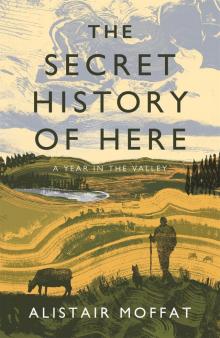 The Secret History of Here
The Secret History of Here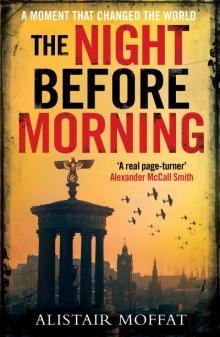 The Night Before Morning
The Night Before Morning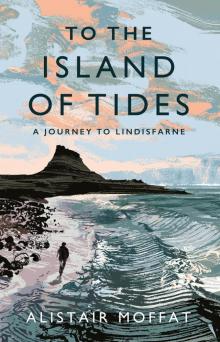 To the Island of Tides
To the Island of Tides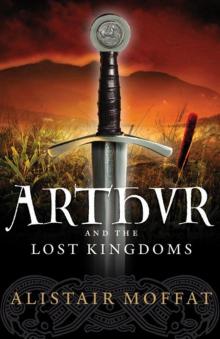 Arthur and the Lost Kingdoms
Arthur and the Lost Kingdoms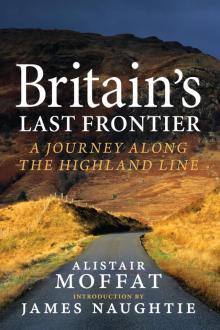 Britain’s Last Frontier
Britain’s Last Frontier The Faded Map: The Lost Kingdoms of Scotland
The Faded Map: The Lost Kingdoms of Scotland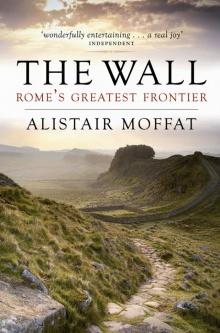 The Wall
The Wall